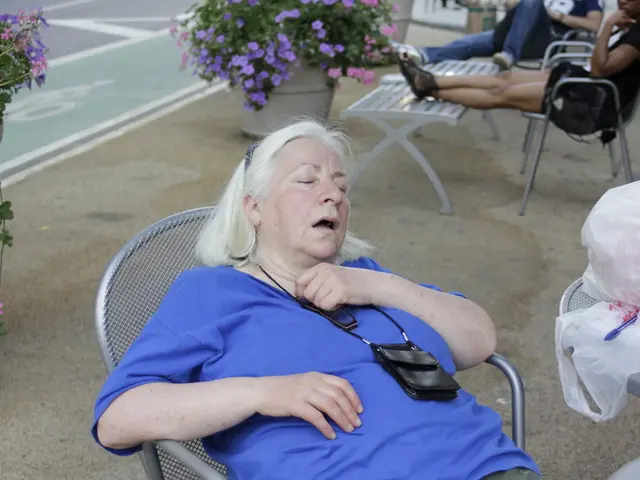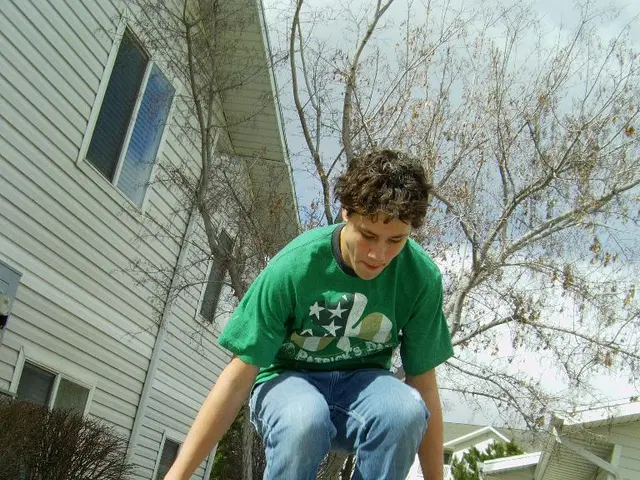Strongest evidence suggests the importance of maintaining physical distance and wearing face masks
Fresh Perspective on COVID-19 Measures:
Latest research published in The Lancet put forward the best evidence for reducing SARS-CoV-2 transmission via physical distancing, mask use, and eye protection. Here's a lowdown on the key findings that could shape our response to the pandemic.
Protection Game Plan:
In the hunt for a foolproof vaccine, researchers are looking at a timeline of 12-18 months, max. Until then, public health authorities suggest some social and behavioral adjustments to tackle the virus. These changes include regular handwashing, maintaining distance from others, using masks, and sporting protective eyewear, especially for healthcare workers and community personnel.
Questions Galore:
The debate on when and how to implement these policies persists, with several queries swirling around: What's the minimum distance one should keep from others? When and where is wearing protective gear essential? Finally, just how effective are these measures against the virus?
Meta-Analysis: The Game Changer:
To address these question marks, the World Health Organization (WHO) commissioned a comprehensive meta-analysis spearheaded by an international team. The team weeded through over 20,000 research papers, picking 44 that centered on protective benefits related to physical distancing, mask use, and eye protection for SARS-CoV-2, SARS, and MERS-CoV viruses.
There were no differences in effectiveness among the three viruses, so the findings from various studies were combined for a clearer picture.
Distance Makes the Difference:
The study concluded that maintaining a minimum distance of 1 meter from others can significantly lower the virus's spread. Infection rates shipped way down to 2.6%, compared to 12.8% when distances were less than 1 meter. Pushing the distance to 2 meters could offer even more protection.
Dr. Derek Chu, a lead study author, highlighted that every additional 1 meter increased protection roughly two-fold, making the 2-meter rule a wise choice when feasible. He also pointed out that the research could impact the threshold for contact tracing, suggesting a universal shift to 2 meters.
Masks Matters:
The authors also found that face and eye masks significantly reduced the virus's transmission, especially for healthcare workers and community personnel such as care home workers. Wearing any mask cut the odds of infection by 78%, and N95 masks hiked the figure to 96%, offering superior protection.
Co-lead study author Dr. Holger Schünemann stressed that even homemade masks are better than none. While masks aren't infallible, they do provide a considerable layer of protection against the virus.
Caveats and Limits:
The study lacks some key details, such as specific distances measured in included studies and randomized experiments. Moreover, around three-quarters of the studies focused on healthcare settings, meaning there's more uncertainty when it comes to using masks in non-healthcare settings.
Nonetheless, the study offers valuable insights that can guide policymakers and medical professionals during this critical time. And as lockdown measures gradually ease, these findings will play a significant role in deciding our collective path ahead.
For more updates and insights on COVID-19, check out our COVID-19 hub regularly. Stay informed, stay safe!
- The study on SARS-CoV-2 transmission, published in The Lancet, suggests that maintained distance of at least 1 meter from others significantly lowers the virus's spread.
- Researchers involved in the hunt for a vaccine for coronavirus have estimated a timeline of 12-18 months for its development.
- In response to the pandemic, public health authorities suggest that regular handwashing, mask use, and protective eyewear can help tackle the virus, especially for healthcare workers and community personnel.
- The authors of the meta-analysis found that face and eye masks, particularly N95 masks, significantly reduced the virus's transmission, offering superior protection for healthcare workers and community personnel.





